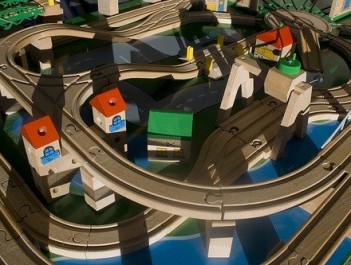This article was first published on November 11 in Bloomberg.

Even if we could maintain perpetual growth, it could lead to disastrous outcomes for our economies and societies. (Image credit: woodleywonderworks)
Now that the U.S. presidential election is over, attention has turned to the challenge of keeping the world’s largest economy growing. The underlying assumption is that growth is always the proper goal.
What if that assumption were wrong? Given our current economic malaise, and the obvious needs of the poor in developing nations, growth may be the only sensible aim in the short term. But what if, in the very long term, economic growth had some natural limit, beyond which it actually became detrimental to the survival of the human race?
This idea has been treated as heresy every time it has been raised, first by Thomas Malthus two centuries ago, and again by the famous Limits to Growth analysis initiated in the 1970s by the Club of Rome think tank. Yet heresies have at times turned out to be true. And this one has some pretty good logic on its side.
The argument takes many forms, but for me the most convincing centers on energy. Nothing in physics is more fundamental. The “E” of Einstein’s famous E=mc^2 is the vital quantity behind all action and motion. It is never created or destroyed, it merely changes form. The energy in Hurricane Sandy hasn’t vanished. It has transmogrified into destroyed buildings, felled trees and vast quantities of heat — released by rains — spread across the eastern U.S.
Energy Use
Every organism, from a tiny bacterium to an elephant, relies on a steady flow of energy to maintain its physical function, warding off the cold equilibrium of death. Homo sapiens is no exception, both individually and collectively. Humans use a constantly increasing amount of energy to keep themselves warm and to fuel increasing economic activity. Over the past three centuries, in the U.S. and globally, energy use has increased at an average annual rate of about 3 percent or so, which means we now use roughly 10,000 times as much energy as we did 300 years ago.
Most people — certainly most economists and politicians — seem to expect such growth to continue indefinitely, as we grow ever richer through technology and innovation. All we need are clean energy sources — a green revolution, perhaps, or a final breakthrough in harnessing nuclear fusion — to guarantee our growth and prosperity.
Such expectations ignore a big problem, and it’s not the possibility of running out of energy. In the long run, the danger is that we will use too much of it, no matter how we obtain it. Discovering a source of limitless free energy could actually be a disaster.







